Dallas (214) 340-8885
Athens (903) 677-9090
Gun Barrel City (903) 887-4341
Dallas (214) 340-8885
Athens (903) 677-9090
Gun Barrel City (903) 887-4341
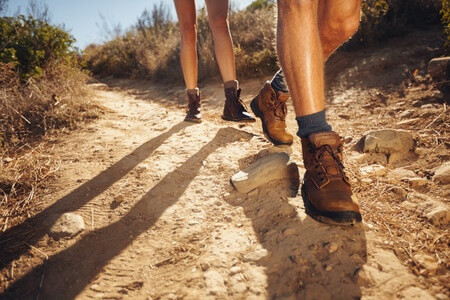
The fall can be a good time for taking hikes. There are several parks and nature preserves in which you can enjoy a beautiful hike in the Dallas area. We’ve got some tips for caring for your feet, which we hope is informative for new hikers and hiking enthusiasts alike!
Wondering if hiking is okay for your feet due to pre-existing conditions? Got an injury while hiking? Consult with our podiatrist at Texas Foot Works, Dr. Jonathan M. Kletz. He will assess your feet and ankles for a proper diagnosis and provide quality foot and ankle care. Schedule an appointment today at any of our Abrams (Dallas), Athens, and Gun Barrell City, TX offices!
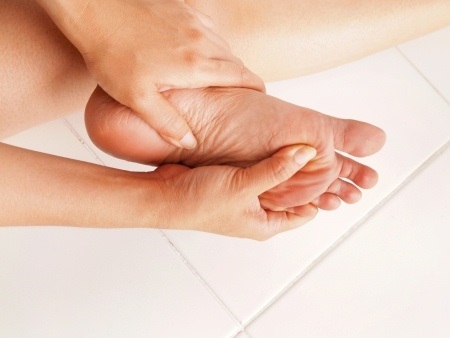
After you take some time to get used to saying the word, you may wonder what that is! Doesn’t really sound harmless, does it? Well, your intuition is correct! It is a condition of inflammation or injury of the tendons around the sesamoids (two small bones near a joint). In this case, they are the sesamoids right under the big toe joint).
As with other forms of tendonitis (like Achilles tendonitis), it is a condition that commonly affects athletes that injure the tendons via overuse from repetitive motions or from traumatic injury. Dancers, basketball players, and runners are prone to this condition, causing them pain and inflammation after putting excessive pressure or force on the big toe joint area. They may experience swelling, bruising, pain, and stiffness. Bearing weight on the balls of the feet or standing at all can become painful.
What can be done to treat sesamoidits?
If you have pain around the big toe joint, it’s best to consult with our podiatrist at Texas Foot Works, Dr. Jonathan M. Kletz. He will assess your foot for a proper diagnosis for your foot pain, and together with his team will provide quality care to treat your sesamoid issue and get you back on your feet. Make an appointment today at our offices in Abrams (Dallas), Athens, and Gun Barrell City, TX!
Some of our actions are second nature. Walking, yawning, and even brushing your teeth – there are some things that we just don’t think about while we are doing it. But maybe it’s time for us to pause for a moment and think about the way we walk.
If you’ve never thought about it before, it may seem strange to analyze the way you walk, also called your gait. Where do you even start? What do you look for? And why should you do it? Read further and we’ll help you figure it out!
Where to start:
What to look for:
Why you should analyze your gait:
If you are unsure about checking your gait on your own, we can help you. Come in for a gait analysis by contacting our podiatrist at Texas Foot Works. Dr. Jonathan M. Kletz is ready to help. Make an appointment today at any of our Abrams (Dallas), Athens, and Gun Barrell City, TX offices!
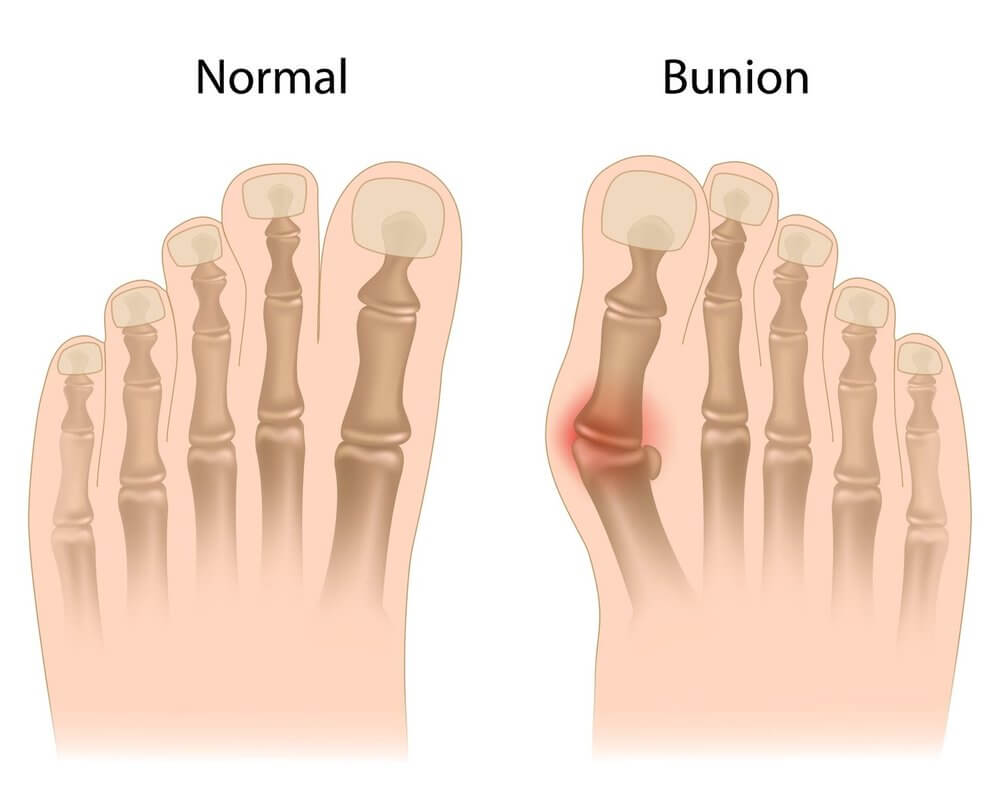
Bunions are a bone deformity that can really affect quality of life, depending on how far the issue has progressed. The bony growth on the side of the big toe joint not only causes pain and irritation, but it can also make it difficult to fit into footwear made for the masses.
Non-invasive treatment of this uncomfortable deformity includes addressing symptoms of bunions, such as: bony growth, swelling or redness, corns or calluses, pain, stiffness, or inflammation of the joint. Treatments may include:
When these remedies do not work, you may need surgical intervention. Depending on the severity of the bunion, there are different surgical options (bunionectomy):
If you have developed a bunion issue or have one that is getting worse, contact your friendly podiatrist at Texas Foot Works. Dr. Jonathan M. Kletz is ready to help you find the best treatment for your bunion problem. If surgery is necessary, we will help you prepare and ensure proper maintenance after the procedure. Make an appointment today at any of our offices in Abrams (Dallas), Athens, and Gun Barrell City, Texas!
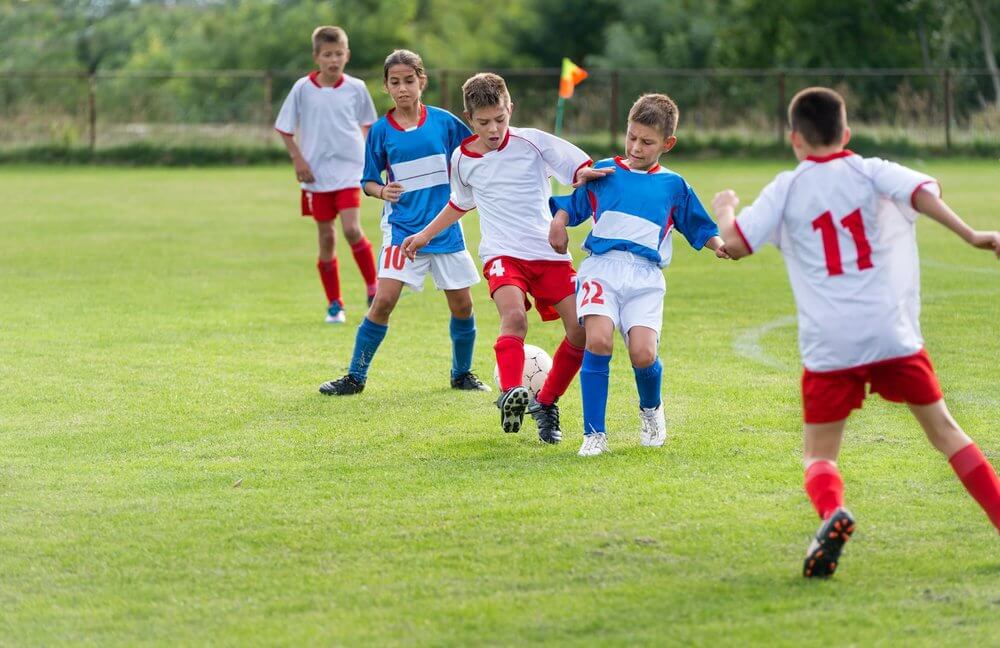
These days, there are so many technological devices that seem to grab and keep our children’s attention. Many children can spend several hours at a time, engrossed in the screens. This has led to a more sedentary lifestyle for children, making it more important than ever for parents to encourage physical activity. One such way is to have children participate in sports, whether it be in a children’s group setting, after school programs, private lessons, or community leagues.
Participating in group activities can benefit children in many ways, including teaching sportsmanship, promoting teamwork skills, and improving social skills. The increased activity also helps to keep a healthy lifestyle. However, with sports comes the added risk of injuries. Some common injuries include:
For growing children, one of the most important injuries to pay attention to is an injury to a growth plate. The growth plate is the area that is still growing on long bones such as in the legs or in the feet. It may require specialized care from an orthopedic surgeon. After an injury, assess your children’s feet. If pain and symptoms are mild, you may be able to treat with the RICE method (rest, ice, compression, elevation). If pain and swelling are moderate or severe, it’s important to see our podiatrist, who can determine how to best proceed.
If your child has sustained an injury, contact your local podiatrist at Texas Foot Works. Dr. Jonathan M. Kletz is ready to help you find the best treatment for your growing little one. Make an appointment today at any of our Abrams (Dallas), Athens, and Gun Barrell City, TX offices!

Feet have the important task of bearing our entire weight and keeping us mobile. The heel part of the foot, in particular, endures a lot of impact and stress. Because of this, heel pain is a common occurrence for many people. For some it is just mild pain, but for others, it can be debilitating and affect mobility. Treating heel pain will depend on the cause of the pain, from injuries to genetic disease, and tissue strain.
Here are some common causes of heel pain and ways to prevent and treat them.
Peripheral Neuropathy – Burning pain along the bottom of the foot and heel can also be caused by plantar fasciitis and peripheral neuropathy. At the onset of diabetic neuropathy, you can experience a burning sensation as you lose feeling. At the onset of any burning feeling, or if you have been diagnosed with diabetes, make sure you check your feet and get an assessment with our podiatrist.
Are you concerned with ongoing heel pain that just won’t go away? Contact your local podiatrist at Texas Foot Works. Dr. Jonathan M. Kletz is more than happy to discuss this topic more in detail and find solutions for any problems you may come across. Make an appointment today at any of our Abrams (Dallas), Athens, and Gun Barrell City, TX offices!
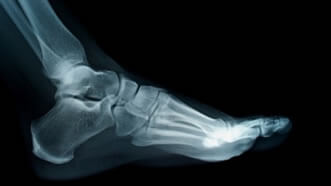 Highly active people (athletes in particular), or those with a very sedentary lifestyle, are very prone to stress fractures. When muscles weaken—either from too much or too little use—the muscles cease providing cushion for the foot and ankle as they impact the ground. As there is very little to protect the bones in your feet, each step you take causes the bones to absorb the full impact, and this causes cracks to form, or stress fractures, to form in the pressurized bones.
Highly active people (athletes in particular), or those with a very sedentary lifestyle, are very prone to stress fractures. When muscles weaken—either from too much or too little use—the muscles cease providing cushion for the foot and ankle as they impact the ground. As there is very little to protect the bones in your feet, each step you take causes the bones to absorb the full impact, and this causes cracks to form, or stress fractures, to form in the pressurized bones.
Basketball, tennis, and gymnastics are three of the top activities in which stress fractures appear consistently and frequently. On the other side however, those people who have previously lived an inactive lifestyle may incur a fracture when transitioning abruptly to an active lifestyle—such as those starting a high-impact, intensive workout. The muscles, unused to such vigorous work, are not used to handling and cushioning against a vigorous activity. Also, those patients who suffer from osteoporosis, or any condition in which their bones are weakened, frequently suffer stress fractures simply from normal wear and tear.
At the localized site of the fracture (typically where the symptoms originate) the pain can be immense. Sharp or dull pain is paired with swelling and possibly tenderness—engaging in any kind of further activity, especially high-impact, is highly discouraged. Though stress fractures heal in time, they are not as serious as say, when you receive one and continue engaging in high-impact activity; the condition may turn into a full fracture. A full fracture is very serious and may prevent usage of the foot wholesale.
From this point, treatment can vary patient to patient with the severity of the fracture. Rest is absolutely required for the foot. Fractures vary in healing time, some can be healed with short bursts of rest, and others require prolonged periods of resting paired with crutches. In cases in which the fracture is very serious, surgery may be authorized to install pins supporting the fracture and aiding in healing.
On diagnosis of a stress fracture—immediately cease the activity that caused the fracture and rest! Prevention is always your first step, however, if relief of the symptoms does not occur naturally and within a reasonable time frame, an orthopedic specialist is highly recommended.

Folks who have been diagnosed with diabetes will quickly learn that there are many changes they must make in their lives. From checking their blood sugar levels to changing their diet and activities, there are many lifestyle changes involved. This includes checking the feet daily in case of secondary issues that arise due to the way diabetes affects the body.
The following are common secondary issues that affect the feet for people who have diabetes:
Make sure you treat your feet well to prevent incidence of secondary issues. Check them daily and take care of any issues that arise sooner than later. If any foot-related developments occur, it’s best to see our podiatrist quickly.
If you have further questions about diabetic foot complications, contact your local podiatrist at Texas Foot Works. Dr. Jonathan M. Kletz is more than happy to discuss this topic more in detail and find solutions for any problems you may come across. Make an appointment today at any of our offices in Abrams (Dallas), Athens, and Gun Barrell City, TX!
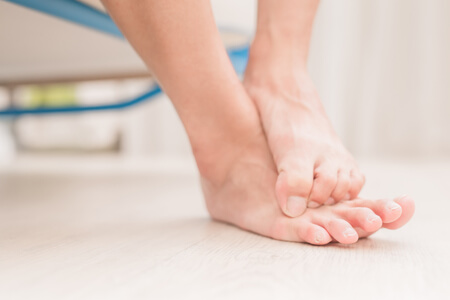
Most of the population doesn’t even know that some people suffer from hyperhidrosis. If you’re among those who don’t know what it is, it’s essentially a condition in which people experience excessive sweating on certain parts of the body. Most of excessive sweating happens on the hands and feet, but can be in the armpit and the body overall. There isn’t a particular known cause, other than the fact that it is inherited. There isn’t even a known solution to stop the excessive sweating – only some short-term treatments to reduce the sweating.
The biggest concern for hyperhidrosis is more of a social aspect of embarrassment and discomfort, rather than a severe health issue. A handshake or taking shoes off at a friend’s house can be embarrassing. A clammy handshake or smelly wet socks are not something that most people are comfortable with. Furthermore, sweaty feet can mean slipping on slick floors, which can lead to injury.
There are, however, some health-related side effects. Due to the constant wetness on the feet, skin can break down if not properly cared for. Bacterial, viral, or fungal infections can be common and may not resolve as easily. Additionally, foot odor can affect all shoes and become an emotional stress for those affected.
Things you can do to reduce problems with sweating and risk of infection:
Some treatment options include:
Is your hyperhidrosis severely affecting your quality of life? Come see our podiatrist, Dr. Jonathan M. Kletz of Texas Foot Works. Make an appointment today at any of our offices in Abrams (Dallas), Athens, and Gun Barrell City, TX to find the right solution for your excessive sweating problems.
Unless it becomes painful, you may not even notice that you have a plantar wart, which can look like calloused skin. In fact, some can come and go without needing treatment. But when they don’t go away, they can become annoying and unsightly. Taking your shoes off, especially at a friend’s house during summer would feel like a no-no.
So what can you do about it?
First, be sure to spread love, not warts. Plantar warts are caused by the Human Papillomavirus (HPV) and are contagious through direct contact, shared towels and clothes, or while walking barefoot in locker room floors. The virus enters the skin through any breaks in the skin, such as cuts or scrapes. To prevent spreading warts, make sure you don’t share towels or socks, and use flip-flops in communal areas.
Second, you can try some home treatments using over-the-counter items.
Third, if over-the-counter treatments do not work, our podiatrist can treat you in the office using stronger cryotherapy or chemicals. He can also safely surgically remove some of the hardened skin.
Finally, take prevention measures. If you’ve been infected, the virus may live on in your body and reappear. However, to prevent a new infection, make sure to keep your feet clean. Wash your feet each day and fully dry them. Moisturize if necessary and treat any cuts or scrapes. Also, wear flip-flops in communal areas in which people might be going barefoot. And don’t be part of the problem – don’t go barefoot in communal areas when you’ve got an active plantar wart!
Do you have wart problem that won’t go away or has gotten out of hand? Come see our podiatrist, Dr. Jonathan M. Kletz of Texas Foot Works. Make an appointment today at any of our Abrams (Dallas), Athens, and Gun Barrell City, TX offices.